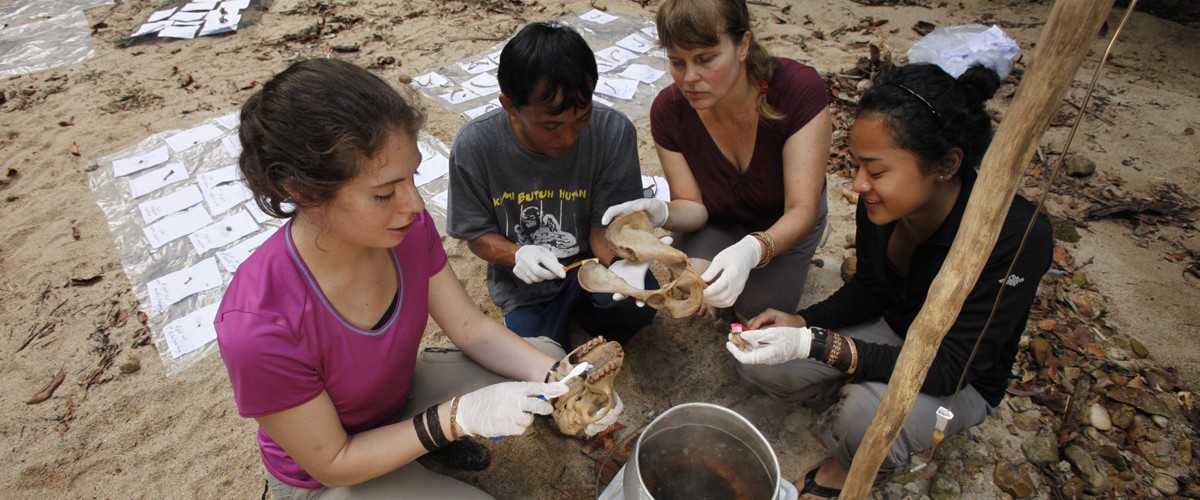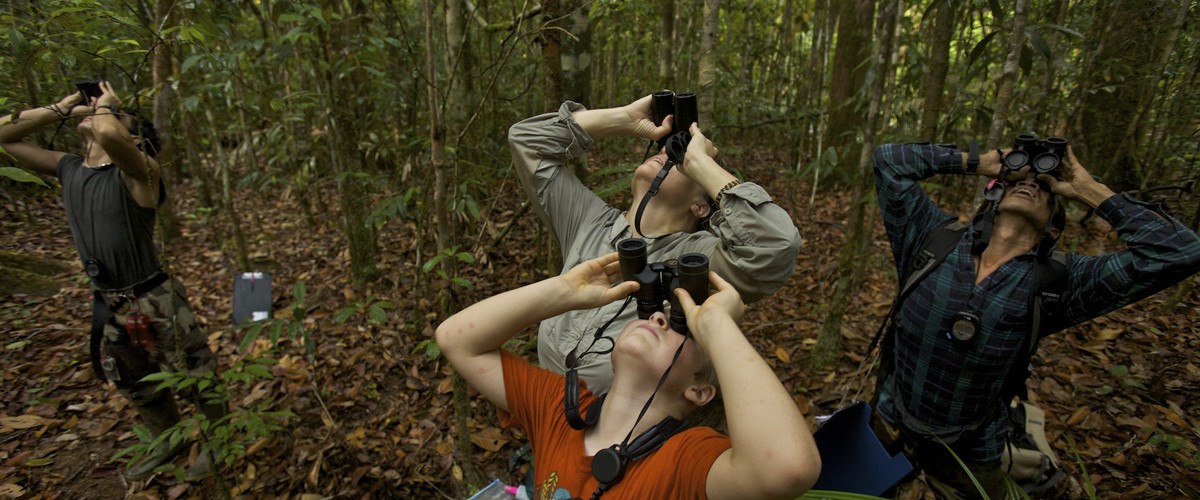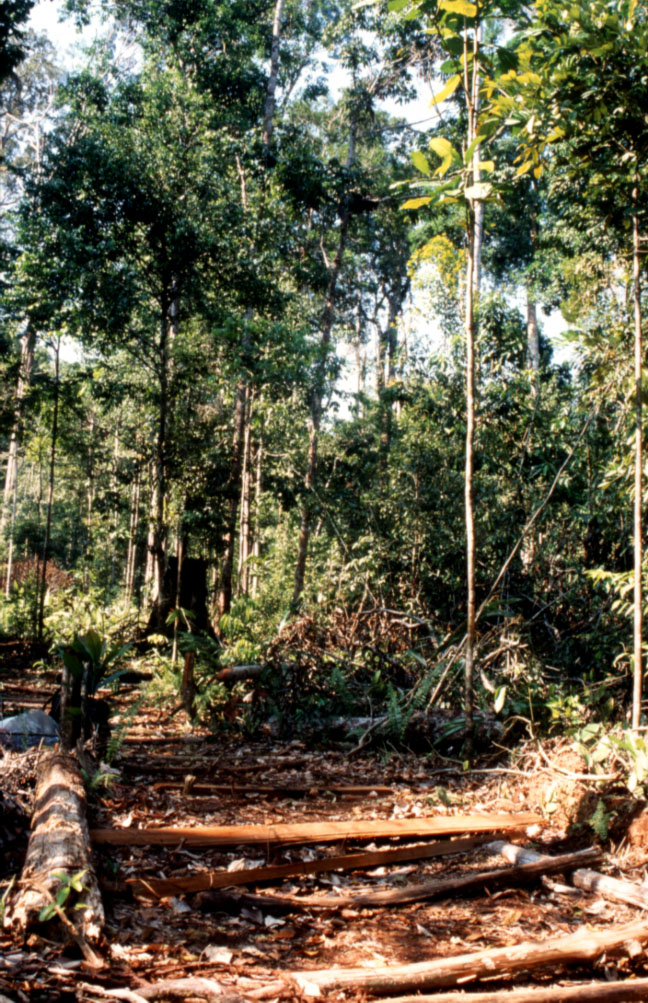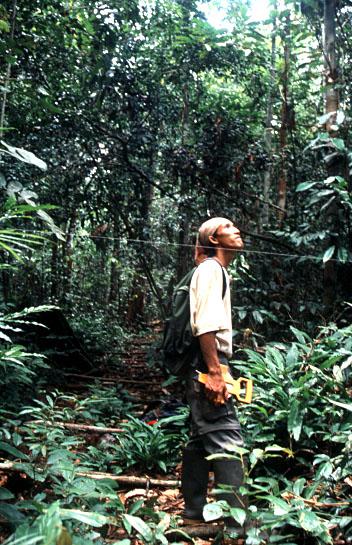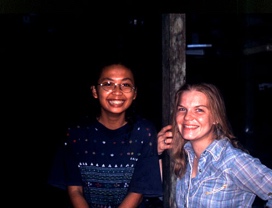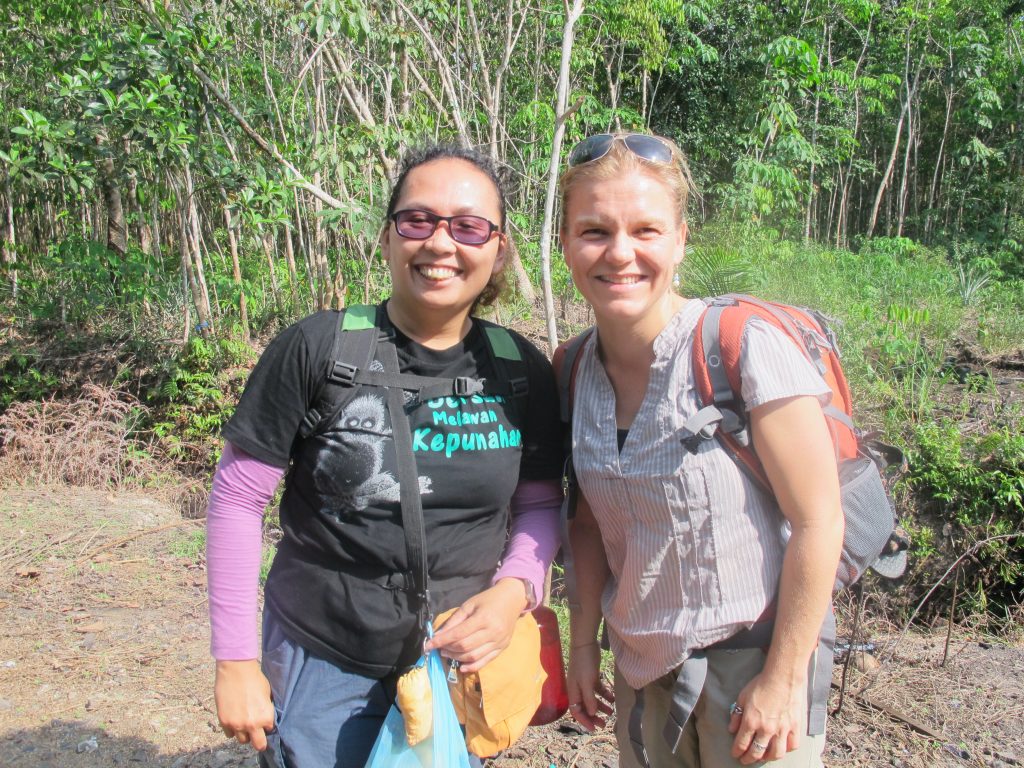By Andrea Johnson, GPOCP Board Member and Secretary
We have some pretty cool news to share. But first, travel back in time with me for a moment.
Early 2001: For the last year I had been working with Dr. Cheryl Knott’s orangutan project in the world’s most beautiful place. I had waited for the Y2K “end of the world” while watching stars from the sandy banks of the Air Putih River, no possible internet connection to be blown; I had listened to the 2000 US election chaos unfold over a staticky short wave radio (“something about ´hanging Chad´?”). And now, my research visa was expiring, but I was a young and hungry 20-something, and I wanted more. So when she said, “we really want to do Gunung Palung National Park’s first orangutan population census”, I was like: sign me UP!


Turns out that counting orangutans isn’t as simple as you might think. There’s a reason these reclusive souls have survived and prospered in the high, tangled forest canopies of Borneo! Population surveys are therefore done not by counting animals but by counting the evidence they leave behind: the nests they make to sleep in each night, and sometimes for daytime rest or play or defensive spaces too. By figuring out the density of nests in different habitat types, you can estimate the density of orangutan individuals and eventually calculate a figure across the whole 108,044 hectares of National Park.
Of course there are some steps between counting nests along a transect and arriving at a population figure! I had no idea what I was signing up for – I’d spent my time at Cabang Panti Research Station, where the trails were clearly marked, the forest was intact, the water was clean and the living was (relatively) easy. But to survey the entire park meant navigating up new rivers, cutting machete trails for hours through steep terrain, battling mosquito swarms to set up camp in peat swamps, and spending months scanning for rotting wads of leaves 20 meters above our heads. To carry out this feat we partnered with the Gunung Palung National Park Bureau and our team included rangers, local porters, our long-term staff, and Indonesian students. We also did extra sampling in the forests of Gunung Palung’s northern buffer zone, to understand whether orangutans were still using this degraded, heavily logged habitat. We walked kilometers of kuda-kuda skid trails, muddy mazes of destruction built to pull giant trees out of the forest’s depths towards downstream sawmills; my heart broke at least as many times as our outboard motor did.
Right: Research assistant Rhanda (Landa) searches for orangutan nests. Landa has been part of the orangutan project since its start, and still works for GPOCP today!
It’s also not a simple A-to-B calculation to get from “how many nests” to “how many orangutans”. You need answers to a lot of really specific questions: questions we could only answer because of the long-term data collection that Cheryl had begun in the mid-1990s. For example: Do all orangutans make nests? (Yes, except for the 11% that are dependent offspring.) How many nests does an orangutan make each day? (1.16, on average, although adult males apparently take more naps than other age-sex classes!) Or how long does a nest last between being built and completely falling apart? (It depends on forest type, but between 259 and 399 days). I apparently taught myself not only population modelling and statistical software packages but also something called “Markov chain analysis” which applied matrix mathematics to estimate how long it takes an orangutan nest to decay. (Like I said: young and hungry…)
The end result of all that work was our estimate of approximately 2500 individuals within Gunung Palung National Park – a scale of magnitude greater than the only existing guesstimate. This peer-reviewed finding solidified what we already suspected: GP was one of the world’s critical remaining habitats for Bornean orangutans.
And twenty years later, it still is. I am excited and proud to begin to share with you the topline results from the latest population survey done in 2019-2020. Research led by Beth Barrow, currently GPOCP’s Conservation Research Director, estimates the population of orangutans to remain at over 2000 individuals. The analysis is still being finalized – and there are changes to habitat maps and sampling methodology that any good scientist should note as a caution against simple comparisons – but it’s clear that the population has remained relatively stable.
In the context of so many years of compounded threats – logging, poaching, forest conversion and fragmentation – I want to call this stability a minor miracle. Except it’s not a “miracle” at all: it’s the result of over 20 years of dedicated conservation efforts by researchers, National Park officials, and local organizations, with GPOCP leading the way.
When I was working at Cabang Panti in 2000-01, we listened with desperation to the chainsaws coming closer and closer, watched the skies go dark with catastrophic seasonal fires, wept when our colleagues at a community forestry program in the Park’s buffer zone were violently forced to flee by illegal timber barons. Things got even worse before they began to get better. And through it all, GPOCP stuck around. There is no doubt in my mind that the long-term research presence, the tireless advocacy and relationship-building and investment in community livelihoods that Cheryl and other colleagues have been doing since 2001, is the reason Gunung Palung still has one of the world’s remaining sizable populations of Bornean orangutans.
Another important and hopeful finding of our 2001 census was that orangutans were perfectly capable of living in logged forest areas – we found them there at densities similar to undisturbed forests. The latest survey, however, finds that densities are significantly lower in heavily disturbed habitats, suggesting that the cumulative impact of various human pressures does take its toll. For a long-lived species like orangutans, what happens to their habitat over the next twenty years is what really matters.
Sticking around may not sound particularly sexy. But it’s essential – it’s how real protection happens. This newest survey gives us evidence that our approach works. And GPOCP can’t do it without you.
————-
Management of Cabang Panti Research Station is conducted by the Gunung Palung National Park Office (BTN-GP) in collaboration with GPOCP/YP. Scientific research is carried out in conjunction with the Universitas Nasional (UNAS) and Boston University.

